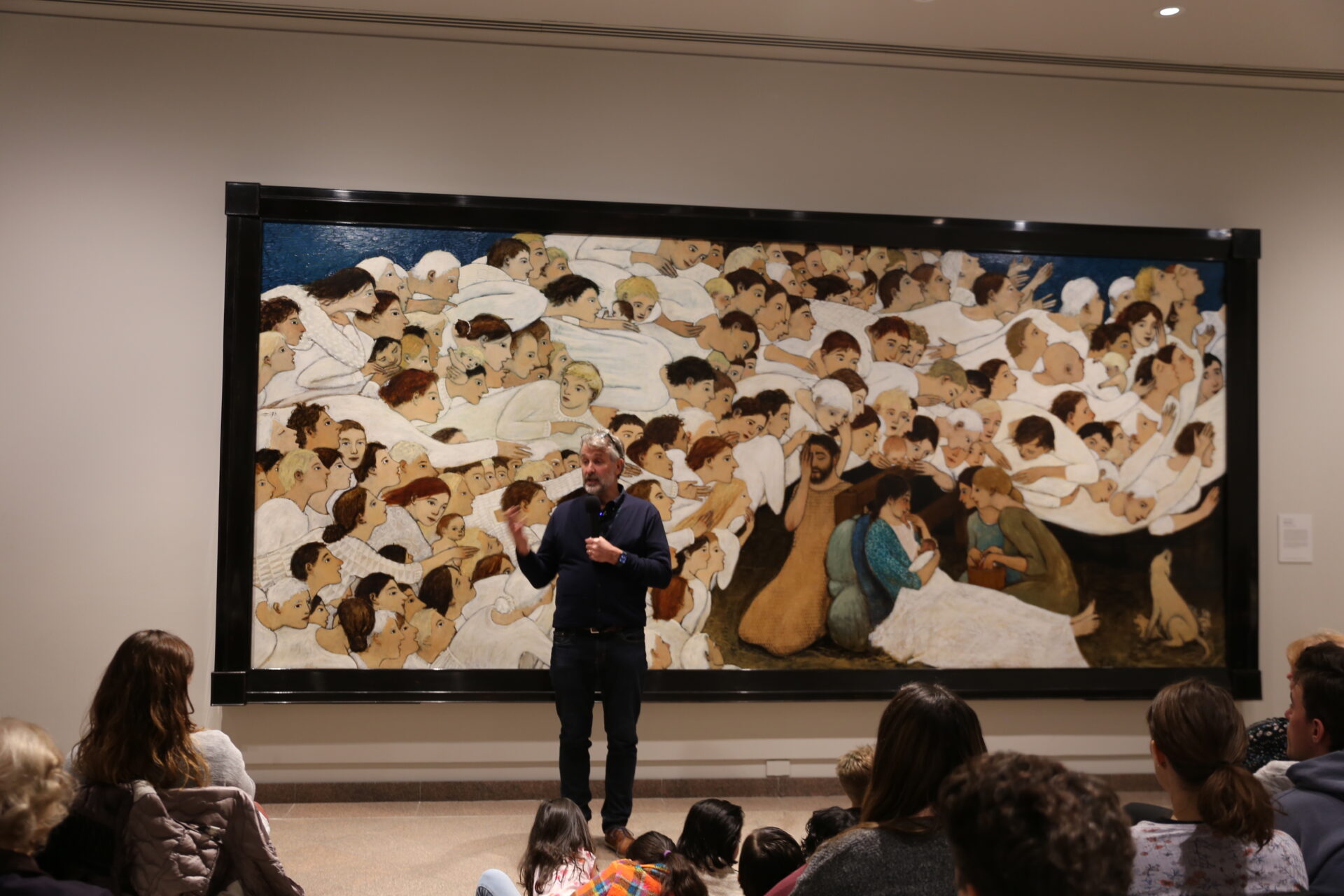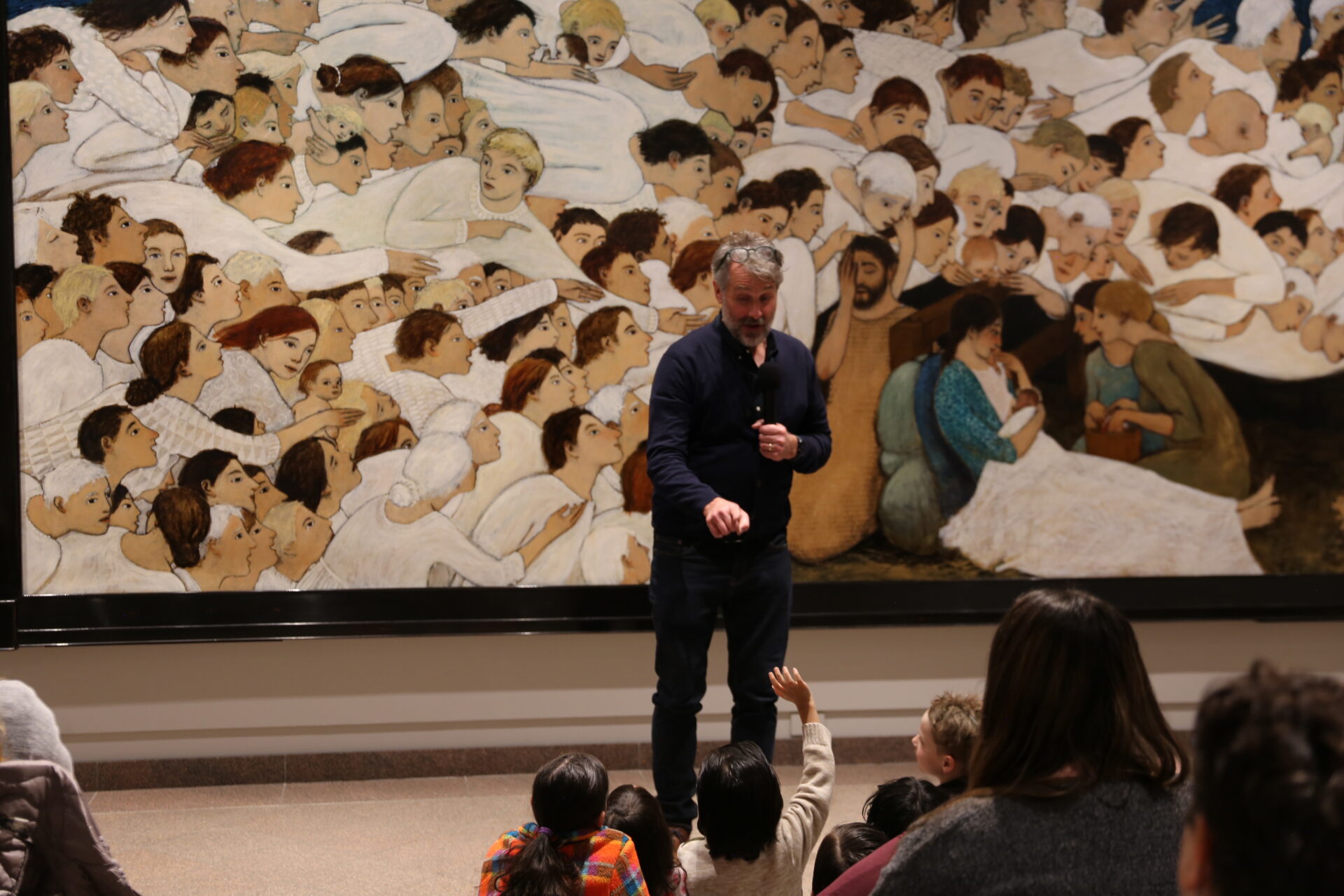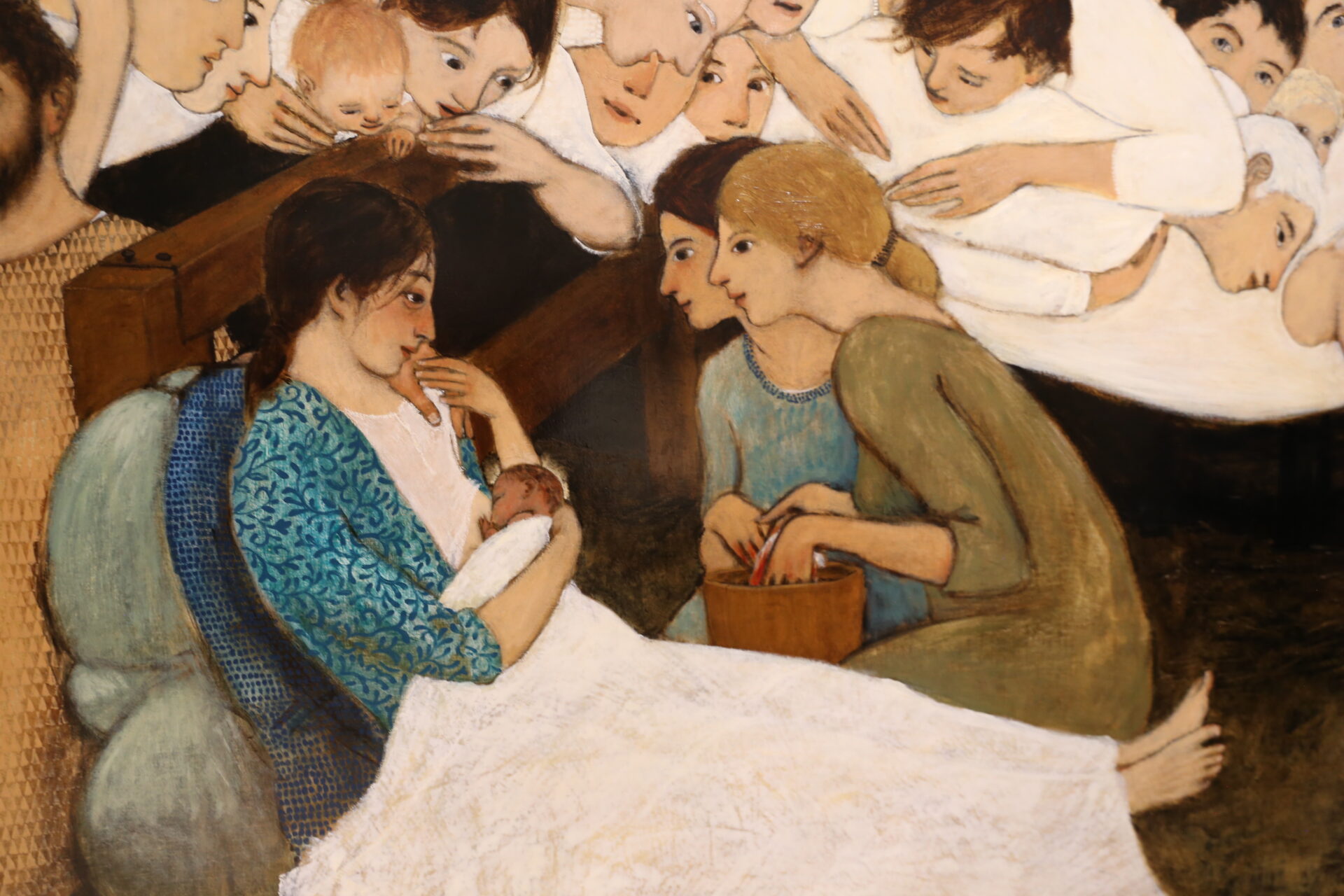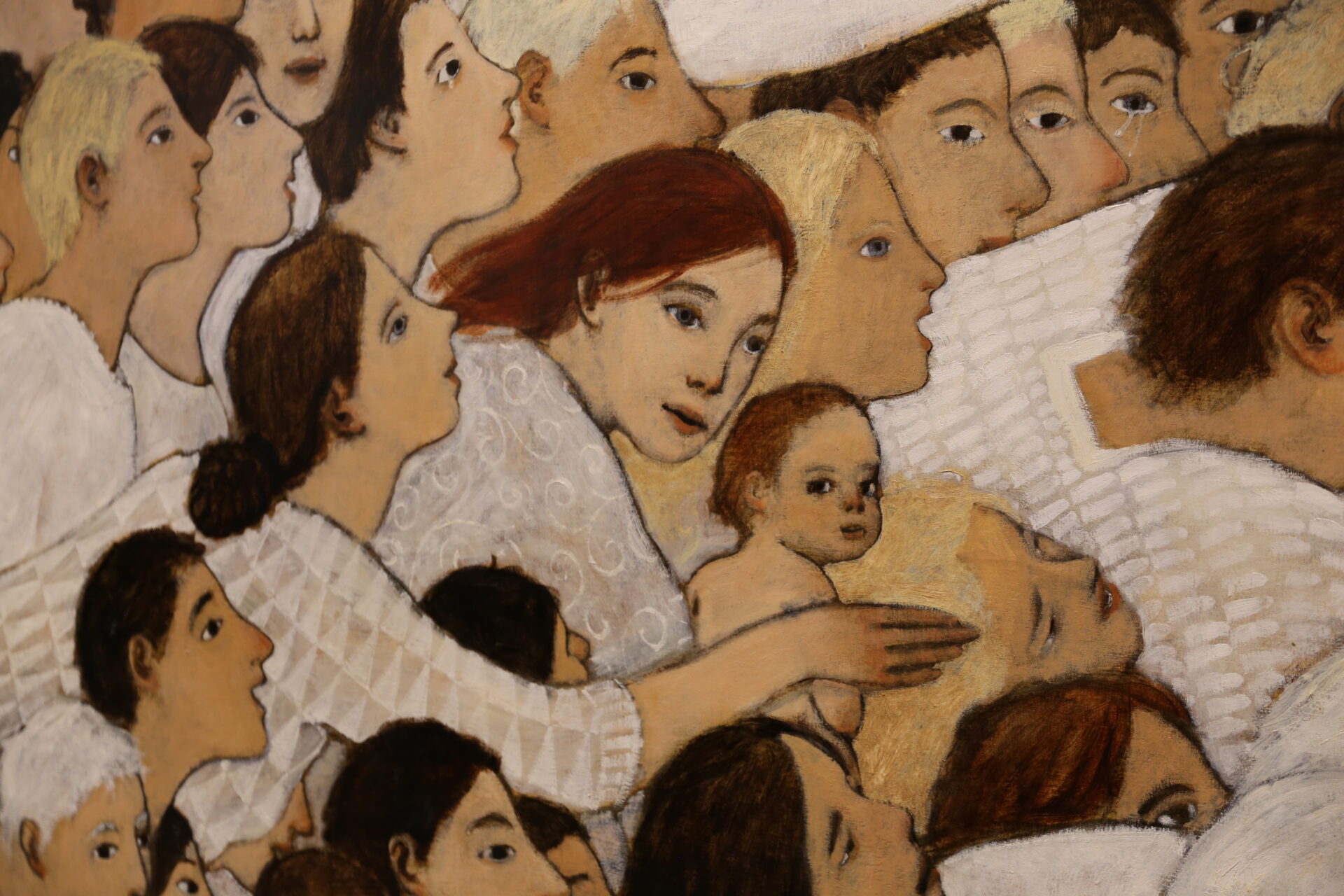
Brian Kershisnik, a professional artist and BYU alumnus, visited the BYU Museum of Art on Monday, Dec. 4 to showcase and answer questions about his painting, “Nativity.”
A large group of people gathered in the basement of the MOA to hear Kershisnik provide insight on his 7’ x 17’ oil painting depicting the birth of Jesus Christ. The lecture began with an introduction of the artist given by Philipp Malzl, the event facilitator.
Malzl described Kershisnik as being “a curious kid and with no notion at all of what he wanted to be when he grew up.”
Kershisnik was forced to evacuate Pakistan his senior year of high school. After serving a mission for The Church of Jesus Christ of Latter-day Saints in Northern Europe, he planned to study ceramics at BYU. He met Joe and Lee Bennion and tried his hand at ceramics under their tutelage. When it became evident Kershisnik wasn’t a potter, he tried painting.
“Painting changed everything,” Malzl said of Kershisnik. Although Kershisnik’s studio is based in Provo, his art is featured in collections worldwide.
Kershisnik gave a brief background of the painting, which was the largest he had ever attempted at the time. He explained that while he was in a temporary teaching position at BYU, he enjoyed giving his students challenging assignments, such as drawing 100 heads in three days in their sketchbooks. He always did the assignments alongside his students.
“I finally decided that since I was asking them to be ambitious, I should also be ambitious. So there was a wall this size from the studio that they had provided me … I stretched a canvas, I stapled the canvas to the wall, and then gessoed it and then completely lost all confidence,” Kershisnik said.
At the time, Kershisnik had been experimenting with “witnesses” and how life events are witnessed, such as the birth of his children. Then he thought of doing the birth of Jesus, and how Jesus entered the world the same way we did, through a messy and painful birth. So he found a way to convey both concepts.
Kershisnik then opened up the floor for questions, prioritizing the children sitting in the front. One boy asked why Joseph was covering his face, seemingly in agitation.

“You don’t have any children, do you?” Kershisnik asked in response, and the audience laughed. He explained how while a birth is more dramatic for the mother, it’s also very dramatic for the father. In the painting, Mary is actually comforting Joseph, and Joseph is feeling overwhelmed by their circumstances and the birth itself, which felt true to reality in Kershisnik’s mind.
Another child asked why there were so many people shown in the painting when it was only Mary and Joseph at Jesus’s birth.

Kershisnik explained that according to the scriptures, we hardly know anything about Christ’s birth. The Bible mentions him being laid in a feed trough, which is where the image of the stable comes from, but we don’t even know if he was born in a stable.
The midwives shown in the painting are also not mentioned in the Bible. Kershisnik explained it’s in the nature of women to help during a birth and feels confident women would have rushed to help Mary. The appearance of the midwives also alludes to a Jewish folklore of midwives being present at Jesus’s birth.
Kershisnik also shared that he takes a lot of his artistic inspiration from chaos. While many fight against chaos, he feels chaos is necessary because creation comes from chaos, and being human means being bound to chaos.

One child pointed out that within the painting there are many babies. Kershisnik said he imagined a huge heavenly throng of angels pressing in to see the birth of Jesus but didn’t want it to feel like a mob. He said the presence of children added a lightness to the crowd; a sense of peace.
After answering several more questions, the lecture concluded and the audience was able to personally ask Kershisnik questions and interact one-on-one.
“Nativity” is now on display at the MOA, where anyone can view it. An exhibit entirely dedicated to Kershisnik’s work will be displayed at the MOA in August 2024. To learn more about Kershisnik’s work and sign up for a tour of his studio, visit his website here.




